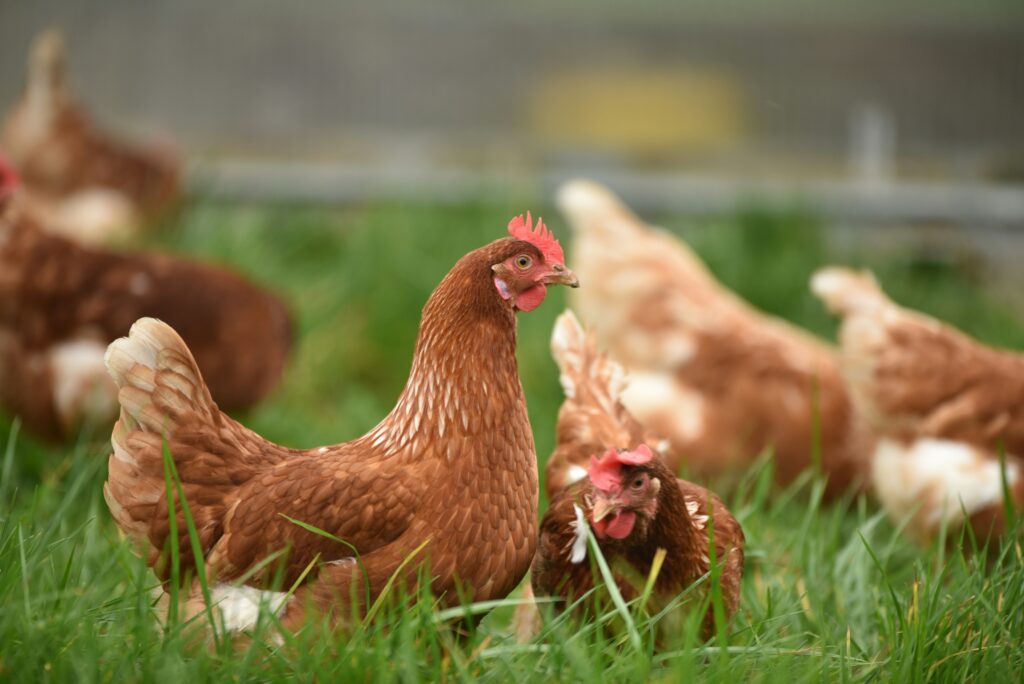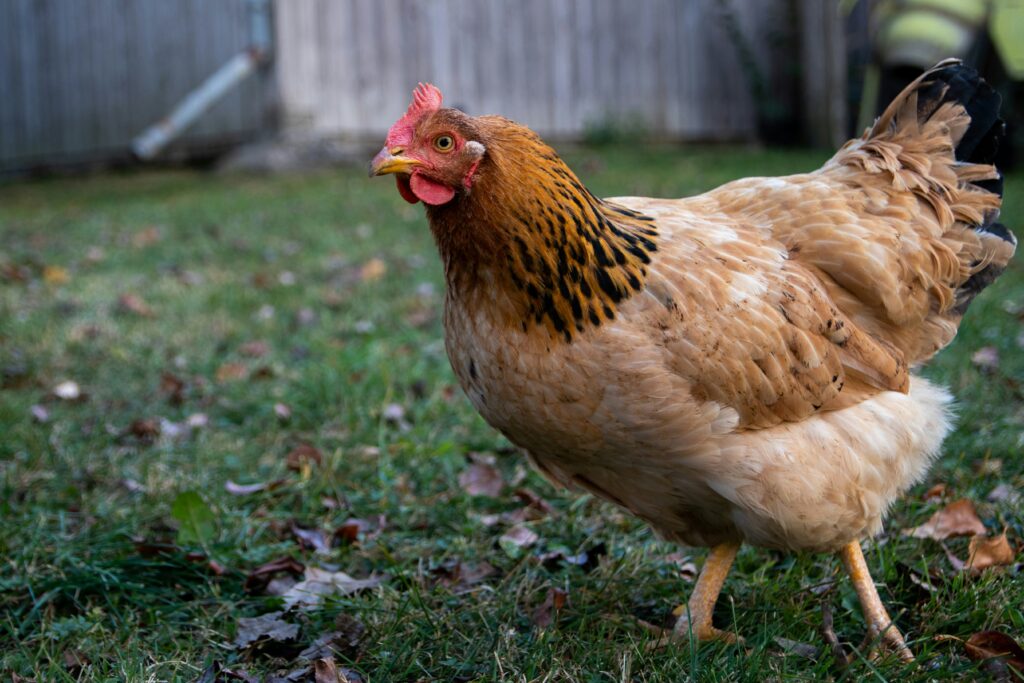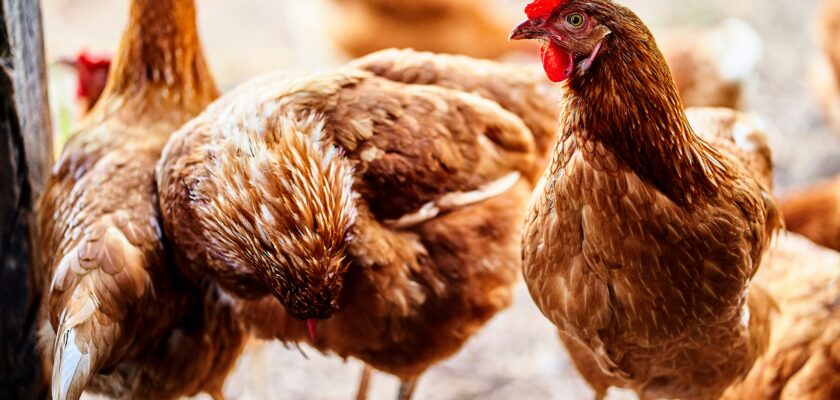Introduction to Chickens and Hens
Chickens are one of the most common and useful animals raised by humans, found in backyards, farms, and commercial poultry operations around the world. But here’s a funny thing: many people use the words chicken and hen like they mean the same thing—which isn’t exactly right. Knowing the difference between a chicken and a hen is a must if you’re diving into poultry keeping or just trying to sound smart around the breakfast table.
Whether you’re raising birds for fresh eggs, meat, or just because they’re quirky and fun, understanding what makes a hen different from a chicken will make a big difference. This article breaks it down in plain, easy-to-grasp English with some helpful real-life experience sprinkled in.

Photo by Jason Holland on Unsplash
Difference between a Chicken and a Hen
Let’s start with the obvious question: Is a hen not a chicken?
Technically, a chicken is the general term for the species—just like “dog” or “cat.” It includes males (roosters), females (hens), and younger birds like pullets and cockerels.
A hen, on the other hand, is a specific type of chicken—a mature female that has reached the age to lay eggs, typically around 16–24 weeks old. So yes, every hen is a chicken, but not every chicken is a hen.
This distinction matters a lot in farming. If you’re raising chickens for eggs, you’ll want hens. If you’re aiming for meat or breeding, you might need both hens and roosters.
Understanding Poultry Terminology
The poultry world has its own language. Let’s clear things up:
- Chicken: Refers to both males and females of the species.
- Hen: A mature female chicken that lays eggs.
- Rooster: A mature male chicken (also called a cock).
- Pullet: A young female chicken, not yet laying.
- Cockerel: A young male chicken.
- Chick: A baby chicken.
Once you know these terms, navigating poultry info becomes a whole lot easier.
Physical Characteristics Comparison
Visually, you can spot differences between a hen and a rooster pretty quickly. Hens are generally smaller, have softer feathers, and less pronounced combs (the red thing on their head). Roosters are usually more colorful, boast a larger comb and wattles, and have pointed tail feathers called “sickles.”
Here’s a simple comparison table:
| Feature | Hen | Rooster |
| Size | Smaller | Larger |
| Comb & Wattles | Small | Large and bright red |
| Feathers | Smooth and rounded | Pointed, longer tail feathers |
| Behavior | Calmer | More aggressive or dominant |
These differences often become more noticeable once birds reach maturity.

Photo by Thomas Iversen on Unsplash
Behavioral Differences Between Hens and Roosters
If you spend time around chickens, you’ll notice the behavior gap between hens and roosters. Hens tend to be calm, social, and focused on nesting and feeding. Roosters, however, act more like the protectors of the flock. They’re territorial, will often crow to announce themselves, and might even get a little feisty.
This pecking order isn’t just random—it helps maintain peace and organization within the flock. A dominant rooster will often mate with multiple hens, while hens stick to social circles and routines.
Egg-Laying Abilities and Differences
Here’s where the hen shines. She lays eggs—sometimes as many as 250–300 per year, depending on the breed. Roosters don’t lay eggs at all.
The egg-laying process begins when a pullet matures into a hen. With proper nutrition and light exposure, hens can lay consistently. No rooster is needed unless you’re trying to hatch chicks.
Interestingly, some hens may “act like” roosters if there’s no dominant male—crow, fluff feathers—but they’ll still lay eggs. It’s rare, but it happens.
Life Cycle of a Chicken
Chickens grow fast. Their life cycle usually includes:
- Chick (0–8 weeks) – Small, fluffy, and fragile.
- Pullet/Cockerel (8–20 weeks) – Adolescent stage.
- Hen/Rooster (20+ weeks) – Mature and reproductive.
Hens begin laying around 5-6 months, and continue for several years, though peak production happens in the first 2 years.
Role of a Rooster in a Flock
Roosters have big personalities. Aside from fertilizing eggs, they keep watch for predators, break up fights, and guide hens to food sources.
While they’re not necessary for egg-laying, many flock keepers like having one rooster per 8–10 hens to maintain balance. But be warned—they can get aggressive, especially during mating season.
Common Myths About Chickens and Hens
Let’s bust a few myths:
- Myth: All chickens lay eggs.
Fact: Only hens lay eggs. - Myth: You need a rooster for eggs.
Fact: Hens lay eggs without mating, just not fertilized. - Myth: Hens and roosters look the same.
Fact: Physical traits vary noticeably with age.
Feeding Differences in Poultry
Hens need more calcium and protein for egg production, while roosters do better on maintenance diets to avoid obesity. Layer feed often includes added calcium—great for hens, not ideal for males.
Chicks and pullets need starter feed, then grower feed before switching to layer feed. Offering the right nutrients at each stage ensures health and productivity.
Raising Chickens: Hens vs Roosters
Raising hens is simpler and quieter. You’ll get eggs without neighborhood complaints. Roosters can be noisy and territorial, which may not be ideal for urban environments.
For beginners, starting with 3–5 hens is a solid choice. Add a rooster only if you’re ready for the responsibility—and have no noise restrictions!
How to Identify a Hen from a Chicken
If you’ve bought chicks, sexing them early can be tricky. Professionals use vent sexing, feather sexing, or color cues, depending on breed.
At around 6–10 weeks, you’ll notice:
- Roosters developing larger combs
- More upright stance
- Hens acting less dominant
By 20 weeks, behavior and appearance usually make it clear.

Photo by Sven Hornburg on Unsplash
Hen Behavior in Nesting and Brooding
Hens have strong instincts to nest, brood, and protect their eggs. Some breeds are broodier than others—meaning they’ll sit on eggs for days, hoping to hatch them.
Broody hens may pluck feathers to warm eggs, growl when disturbed, and stop laying temporarily. Managing broodiness is important if you’re collecting eggs daily.
Economic Value: Hens vs Roosters
In poultry farming, hens generate recurring income through eggs. Roosters may be used for breeding or meat, but typically aren’t as economically valuable.
Commercial farms prefer hens for layers, especially breeds like Rhode Island Reds and Leghorns. Roosters are often limited to stud duties or processed for meat early.
Breeds Where Differences Are Clearer
In some breeds, males and females are easy to distinguish. Examples:
- Barred Plymouth Rock: Males have lighter, more defined bars.
- Silkies: Hard to tell—take longer to show signs.
- Sex-link breeds: Designed for color-based gender ID at hatch.
Breed knowledge helps you select the right chickens for your purpose.
Frequently Asked Questions
Can a chicken lay eggs without a rooster?
Yes. Hens lay eggs without a rooster. The eggs just won’t be fertilized.
At what age does a hen start laying eggs?
Most hens start laying between 18 and 24 weeks, depending on the breed.
What do you call a young female chicken?
A young female is called a pullet until she begins laying eggs.
Is a hen a type of chicken?
Yes. A hen is a mature female chicken, specifically one that lays eggs.
Do roosters crow all day?
Roosters usually crow at dawn, but some crow all day to assert dominance or respond to noise.
Can two roosters live together?
Sometimes. If raised together and with enough hens, they may get along. But often they’ll fight.

Photo by Ginger Jordan on Unsplash
Conclusion
Understanding the difference between a chicken and a hen is more than just trivia—it’s a vital step for anyone interested in backyard farming, egg production, or poultry as a hobby. From gender roles to feeding needs, behavior, and economic value, hens and roosters both bring unique traits to the coop.
Whether you’re picking your first flock or fine-tuning your current one, recognizing these distinctions sets you up for better care, fewer surprises, and a happier flock overall.
